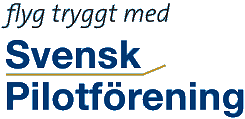Recruiting & assessing the pilots: Who does what?The industry is ripe for a new approach to recruiting & assessing pilots. The way we screen and recruit pilot cadets in Europe is an issue that lately has been raising eyebrows amongst industry experts. Today, the bulk of training schools screen their future clients – the cadets – themselves. The industry has turned a blind eye to this conflict of interest for years as it suited almost everyone.
Regrettably, to many Approved Training Organisations (ATOs), a pilot candidate equals profit. Hence – to make a profit – the school needs a constant influx of cadets in training. Airlines, some of them happy to outsource their own training task, were also satisfied with a high volume of new trainee pilots. For a simple reason – an over-supply of pilots keeps new pilots cheap and labour costs down. The perception has changed when the results of this policy started to surface. Plenty of license holders who were initially able to secure the 100.000 € funding for the flight training with an ATO and to complete the training successfully were deemed ‘not fit for the job’ during the selection process at the airline company level.
As an urgent response to the current situation, ECA recommends several steps to be taken.
First: introducing an independent and effective pre-assessment of candidates for professional flight training. The financial solvency of the candidate must not be the primary factor in deciding whether s/he is accepted to a flight school or not. Other criteria like aptitude, skills, motivation, professional standards should come first. Such an independent and effective pre-assessment would reduce the risk of a conflict of business interest within an ATO keen to get a new customer/cadet who may not have the right skill set but might simply have enough money.
Second: in order to facilitate an objective process for selecting the most talented future pilots Europe needs proper assessment procedures in place in any ATO providing training leading up to an EASA licence. These assessment procedures need to be up to a common European standard. Currently, different ATOs will assess pilots differently.
Third: Airlines must step in and actively engage in the initial screening process for pilots. Ultimately, it is the airline that knows best its operational needs and can set necessary requirements.
A window of opportunity has opened for the European aviation industry to make use of the lessons learnt and to rethink the process of candidates’ initial screening and stakeholder involvement in the recruitment for future professional pilots. Time to use it, before it closes.
Publicerad 2020-02-25 av SPF
|


